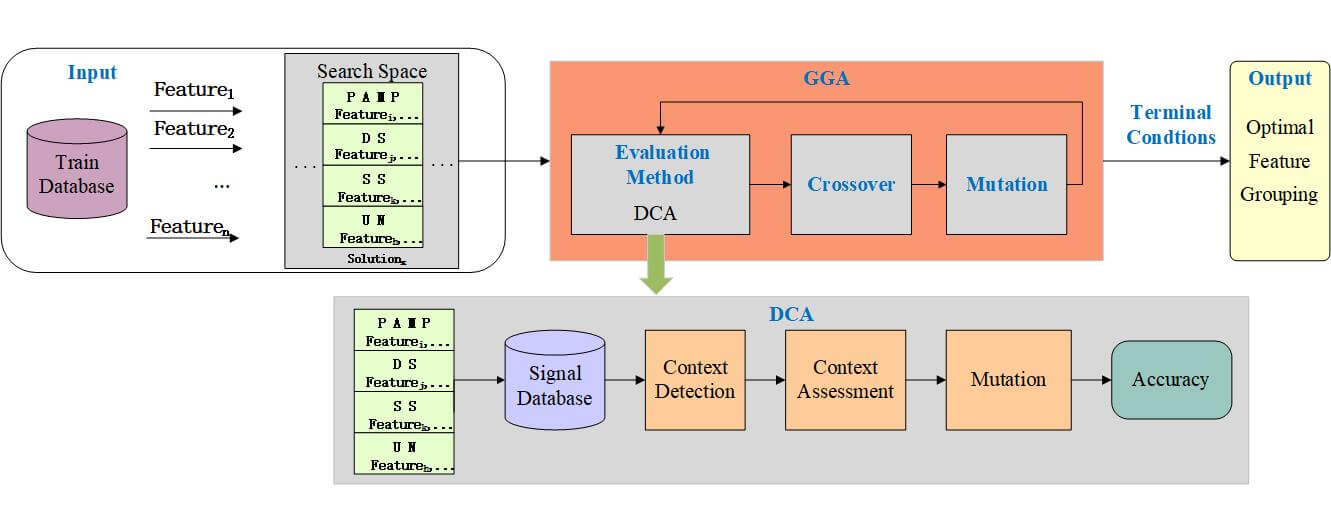 Open Access
Open Access
ARTICLE
Dendritic Cell Algorithm with Grouping Genetic Algorithm for Input Signal Generation
1 School of Computer Science, Wuhan University, Wuhan, 430072, China
2 School of Cyber Science and Engineering, Wuhan University, Wuhan, 430072, China
* Corresponding Author: Yiwen Liang. Email:
(This article belongs to the Special Issue: Swarm Intelligence and Applications in Combinatorial Optimization)
Computer Modeling in Engineering & Sciences 2023, 135(3), 2025-2045. https://doi.org/10.32604/cmes.2023.022864
Received 30 March 2022; Accepted 15 August 2022; Issue published 23 November 2022
Abstract
The artificial immune system, an excellent prototype for developing Machine Learning, is inspired by the function of the powerful natural immune system. As one of the prevalent classifiers, the Dendritic Cell Algorithm (DCA) has been widely used to solve binary problems in the real world. The classification of DCA depends on a data pre-processing procedure to generate input signals, where feature selection and signal categorization are the main work. However, the results of these studies also show that the signal generation of DCA is relatively weak, and all of them utilized a filter strategy to remove unimportant attributes. Ignoring filtered features and applying expertise may not produce an optimal classification result. To overcome these limitations, this study models feature selection and signal categorization into feature grouping problems. This study hybridizes Grouping Genetic Algorithm (GGA) with DCA to propose a novel DCA version, GGA-DCA, for accomplishing feature selection and signal categorization in a search process. The GGA-DCA aims to search for the optimal feature grouping scheme without expertise automatically. In this study, the data coding and operators of GGA are redefined for grouping tasks. The experimental results show that the proposed algorithm has significant advantages over the compared DCA expansion algorithms in terms of signal generation.Graphic Abstract

Keywords
Cite This Article
 Copyright © 2023 The Author(s). Published by Tech Science Press.
Copyright © 2023 The Author(s). Published by Tech Science Press.This work is licensed under a Creative Commons Attribution 4.0 International License , which permits unrestricted use, distribution, and reproduction in any medium, provided the original work is properly cited.


 Submit a Paper
Submit a Paper Propose a Special lssue
Propose a Special lssue View Full Text
View Full Text Download PDF
Download PDF Downloads
Downloads
 Citation Tools
Citation Tools